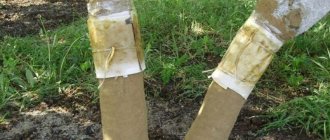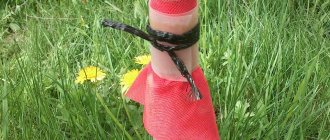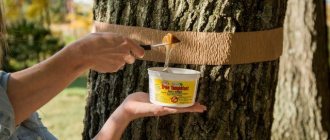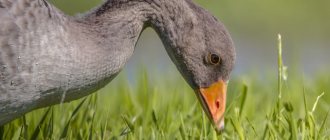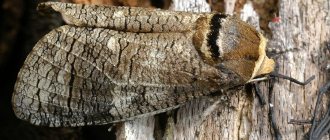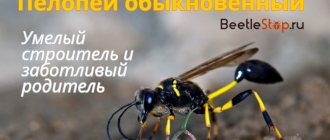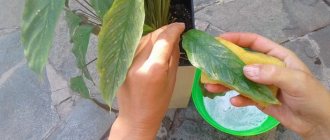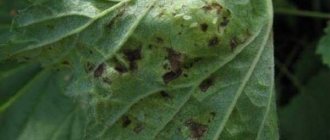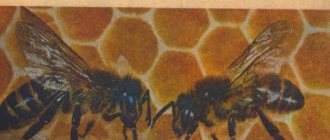Insects cause great harm to trees. They not only destroy leaves, buds, flowers and fruits, but are also carriers of many diseases. There are many ways to control insects. One of them is the use of catch belts, which are easy to make with your own hands. Thanks to their special design, they block the movement of insects along the trunk and provoke their death. This is achieved by various means. Insect catching belts are a biomechanical means of protection that is absolutely environmentally friendly and does not cause any harm to the fruit tree. Hunting belts are both a preventive and protective tool.
Content
- Purpose of hunting belts
- Types of hunting belts
- a) Adhesive (sticky) tree catching belt
- b) Protective hunting belt for trees
- c) Insecticide-impregnated and “repellent” belts
- How to make a catch belt yourself
- Advantages and disadvantages of using insect traps for trees
A catching belt is a simple and at the same time very effective way to protect fruit trees from insect pests. The material discusses the purpose, types of hunting belts, the procedure for their independent production, etc.
Prevention
This includes, first of all, getting rid of aphids. To do this, you need to regularly monitor the health of your garden. Sprinkle the crown (sprinkling water), mulch (cover the surface of the earth around the plants with any materials that regulate the water and air regimes of the fertile layer), as well as water and feed the plantings. It is necessary to wash off aphids and honeydew from the leaves.
Sprinkling the crown is an excellent measure to prevent the appearance of ants.
Particular attention should be paid to young shoots. It is recommended to promptly remove tops (powerful fattening shoots) and basal branches
For prevention, the bark is cleaned in early spring or autumn. It is necessary to bleach the trunks regularly.
Planting repellent plants is an effective way to repel many types of ants. And plants such as parsley, dill and calendula also attract other insect predators that kill aphids:
- ladybugs;
- lacewing;
- ground beetles;
- bedbugs (some types);
- hoverflies;
- earwigs;
- os.
Birds actively destroy aphids. You can attract them to your site by feeding them and building houses. They feed on aphids:
- sparrows;
- kings;
- linnet;
- wrens;
- warblers;
- tits;
- robins.
Sparrows enjoy feasting on aphids.
The safest and most humane way to get rid of these pests is to repel them with odors. The use of plants is a priority: they do not harm the health of people and their pets. At the same time, the pests remain safe and sound and simply leave the garden in search of other housing.
There are various ways to get rid of ants in the garden. Many of them work effectively. It should be noted that any chemical is potentially dangerous for people (especially children), animals and beneficial insects.
Purpose of hunting belts
A trapping belt (a trapping ring) is essentially a mechanical method of protecting plants from insect pests. They are arranged primarily to protect fruit and berry garden plantings from ants or caterpillars of pear, plum, apple moths, and apple blossom beetles, that is, insects that hibernate or pupate under the scales of old bark and in the soil of tree trunk circles.
| READ MORE: THREE main ways to get rid of ants on your property and in the greenhouse |
In addition, in scientific entomological research, trapping belts are used for catching, collecting and studying insects - numbers, population density, the influence of various environmental factors on the morphological features of the structure of individuals, assessing the biotopic diversity of species, etc.
Manufacturing instructions
Application of adhesive composition
Making a trap belt will take you just a couple of minutes:
1Cut a strip up to 20 cm thick from cardboard, film, thick paper or fabric.
2To make a double-sided funnel, its parts must first be glued together. A regular collar belt is cut out in the form of a strip. To make a “skirt,” fold the canvas or cardboard in half and cut out a small notch.
3Wrap the belt tightly around the tree trunk twice.
4Attach it to the trunk using rope or soft wire in two places.
5 Fill the remaining small holes with plasticine, dough, garden varnish or clay.
To protect against hares eating the bark of young fruit trees, you can attach another type of belt to the tree for the winter - a rustling one. When you touch it, animals get scared and run away. However, you should not tie such a belt too tightly, so that frozen moisture that gets into its folds does not damage the bark.
How to make and decorate beautiful garden beds with your own hands: simple, tall, smart. For flowers and vegetables. Original ideas (80+ Photos & Videos)
Types of hunting belts
Several types of hunting belts are used - adhesive hunting belt, protective and impregnated with insecticides.
a) Adhesive (sticky) tree catching belt
Sticky belts are made using special glue, which is applied either to thick strips of paper, fabric, non-woven material, or directly to the tree trunk with a girdle rim. The mechanism of action is to adhere insects.
This glue is produced in tubes (trademarks “Chisty Dom”, “ALT”, “Napoval”, “Domovoy”, “EUROGARD”, “ECOTRAP”, “ARGUS”, etc.) or in aerosol form (trademark “Green Belt” and etc.). The aerosol form is preferable for use as it ensures uniform application of the adhesive.
Examples of insect repellent glue for catching adhesive belts
The glue itself does not dry, has a long shelf life, remains sticky for a long time and does not change its properties. This is ensured by its polymer base and special composition (polyisobutylene provides moisture resistance, polybutylene is responsible for viscosity and plasticity, cycloisan enhances adhesiveness).
For the convenience of gardeners, it is now possible to use ready-made garden catching belts for trees - these are strips of fabric or non-woven material with an adhesive composition already applied. For example, the brands “Your Economy”, “No-guest”, “ARGUS”, “Kapkan”, “Inta-Vir”, etc. As a replacement, you can use sticky adhesive fly tapes.
Examples of manufactured ready-made adhesive belts for protecting trees
b) Protective hunting belt for trees
The mechanism of action is to delay insects when trying to climb the trunk to the crown of the tree.
The protective catch belt can be dry. The materials for them must be either so smooth that the insect cannot find a point of adhesion to the surface of the belt and falls to the ground, or fixed in such a way that the insect cannot find its way up, for example, as happens when a burlap trapping belt is secured to the top part of the material.
Dry, oil repellent, insecticidal tree belts
Protective belts of this type can also present other obstacles that are difficult for insects to overcome. For example, oil. Ants do not like to overcome oil barriers. The belt is made with vegetable oil on wood, palm width (10-12cm). You can use any vegetable oil (sunflower, linseed, hemp, etc.) or technical machine oil. It is recommended to add stove soot or sharply odorous substances (smoking liquid, diesel fuel, etc.) to the oil composition.
It is allowed to alternate glue strips with oil strips - this results in the so-called “double protection”.
c) Insecticide-impregnated and “repellent” belts
Insects caught in a trapping belt impregnated with insecticides die. For impregnation, insecticides are used that are specialized in killing insects that, according to observations, fall into the trapping belt at this time of year (beetles, caterpillars, ants).
This type of belt also includes “scaring” belts. Tree trunks are tied with strips of fabric soaked in kerosene, diesel fuel or carbolic solution. The pungent smell will completely repel insects. After 10-14 days, as the smell evaporates, the impregnation is renewed. Fabric impregnated with pungently smelling substances can be spread on the soil in tree trunk circles, this is guaranteed to provide protection from insects, including soil-dwelling ones.
The only limitation is that these belts are not recommended for use on young seedlings to avoid burns.
Poison traps
Such belts are often called self-killing. They are similar in design to dry and sticky ones, that is, they can be made in the form of funnels, skirts or collars. During periods of mass insect outbreaks, devices soaked in poison are more effective than conventional traps.
The belt is impregnated with insecticide
To make a poison belt you will need a small strip of rags and plastic film. The tree is pre-wrapped with it to protect the bark from the penetration of pesticides. After wrapping a layer of cloth soaked in insecticide around the trunk, it is covered with a “skirt” of film. This way it will weather more slowly and last longer.
It is necessary to impregnate poison belts for fruit trees only with preparations approved for use in gardens. In the event of a massive pest invasion, such traps can be combined with other types of belts. For example, duct tape and insecticide-treated tape can be applied to one trunk.
Ready-made sticky or poisonous belts, as well as slow-drying adhesives for coating them, are available for sale in most stores that sell garden tools or seeds.
Cherry: description of the 20 best varieties (Photo & Video) + Reviews
How to make a catch belt yourself
The work plan for the manufacture and arrangement of trapping belts for trees against garden insects and pests is recommended as follows.
| 1. | It is advisable to equip trapping belts in early spring, while the temperature remains around +5°C, since at values above this indicator, beetles, for example, the apple flower beetle, leave their wintering places and climb the trees. |
| 2. | The place for the hunting belt is first prepared (dry and dead bark is cleaned and removed). |
| 3. | The height of the belt placement is 0.3-0.5...1.0-1.5 m, the number of belts on a trunk or one large branch is 1-2. |
| 4. | A hunting belt in general form is a strip 10-12 cm wide in several turns. The total width of the belt should not exceed 20cm. |
| 5. | The material of the belt is burlap, rags, straw, non-woven material, thick paper, plastic film, etc. It is better to use non-woven material, it is not subject to rotting, dries quickly after rain, and tree bark does not rot. |
| 6. | The material is tightly fixed with twine, twine, rope or wire on a tree trunk or thick twigs and branches in 2 places - above and below the belt, retreating 1.5-2 cm from the edges. It is better to use polypropylene twine. |
| 7. | To ensure a tight fit of the hunting belts, it is recommended to use a foam rubber backing, or better yet, polystyrene foam. The cracks can be covered with clay or plasticine. |
| 8. | It is allowed to make a double belt - from 2 strips, at a distance of 20 cm from each other. Moreover, alternating between glue, or “repelling”, or oil, or two glues, etc. |
| 9. | Glue is applied with encircling rims. Since the glue is very viscous, in order to apply the glue evenly, it is better to slightly heat the tube to 50-60°C, then spread the glue evenly with a spatula. It is much more convenient to apply aerosol glue. |
Plan diagram for the production of catching adhesive belts
If ready-made catching belts are used, then the labor intensity of the process is minimal. It is enough to wrap a ready-made adhesive belt around a tree trunk/branch with the sticky side facing outward with a slight overlap of 2-3 cm. For better fixation, you can additionally tighten it with twine.
The adhesive belt protects the tree throughout the season and does not need to be replaced. However, as they become filled with insects, the sticky belts are renewed.
Method of protection against aphids
The method is very simple, but as always very effective: a natural substance comes to the rescue - birch tar. It should be noted that ants do not tolerate strong odors very well. Everything is done very simply: we wrap an ordinary bandage in several layers around the trunk and impregnate it with birch tar. For the whole season you can forget about ants and aphids.
But there is one very important point: although tar is a natural substance, it is nevertheless very aggressive and can damage the bark of a tree. Therefore, before applying tar (or other repellent), wrap the tree bark with plastic wrap or tape. And only then tie the trunk with a bandage or cloth. This will protect the bark from damage by aggressive substances.
And one more thing you need to pay attention to: young trees have smooth bark and the film or tape will fit tightly enough to the trunk, and ants will not be able to crawl under them. Another thing is mature trees
Their bark is lumpy and has many cracks and irregularities, along which it will not be difficult for ants to overcome your trap. What to do in this case? Everything is very simple: cover all the cracks and irregularities in the place where the belt will be installed with garden varnish or simple plasticine.
In addition to ants, such a trap successfully protects against many other pests. In this simple way you can reliably protect your fruit tree for the entire season. Since tar is a highly oily substance, neither rain washes it off nor does it practically dry out in the sun. Of course, if the summer is very hot or very rainy, then we will need to soak the hunting belt with tar again.
Gate trap
A gate trap is often used. It is more complex in design than others. To make a “gate,” you need a wide rubber strip long enough to cover the tree. The strip is fixed to the tree, the ends are glued together with glue and folded upward to form a groove around the trunk. The trap is secured from below with tape or other material that will prevent the rubber from turning back. Machine or vegetable oil is poured into the gutter.
When they try to climb over the chute onto the tree, the ants fall into the oil and die. Periodically, the trap is cleared of ant corpses and small debris.
Belt traps help protect fruit trees from ants and flightless aphids, but this is not enough for complete protection, since insects that can fly also cause damage to fruits.
Hunting belt
- a very simple and very effective way to protect garden trees from attack. The trunk is a kind of transit territory between the soil and folds of the bark, where pests overwinter, and the crown of the tree with its fruits and leaves, where they feed.
Therefore, installing a trap on the tree trunk will help stop the flow of insects both to and from the tree, depending on the season. In fact hunting belt on a tree
will be beneficial starting in early spring and.
Considering that there are only crawling insects, but also flying ones (depending on the stage of development), you need to understand: hunting belts will not save you from 100% of pests. But you can count on 40% interest - and this, you see, is a lot. The usefulness of the hunting belt is especially noticeable when fighting the most important enemy of gardeners: the hunting belt
harvests most of the harvest of caterpillars that could later become second-generation butterflies.
Glue for rats and mice - what is it and how does it work?
Probably, many had to deal with such minor “living problems” as rats or mice. These unpleasant rodents cause only one problem: from banal fright to damage to furniture and other household items. But people have learned to counteract them quite effectively using “special glue.”
Glue against rats, mice and insects is a special preparation that is designed to combat rodents; It does not dry out for a long time, which is why it retains its properties for a long time. It is applied to different surfaces along with bait and placed in the place where the activity of the “enemies” is greatest. The rodent, sensing the smell of food, unsuspectingly, goes to the trap you have prepared. Upon contact with the glue, his body sticks and he dies. The rodent cannot get out. All you have to do is get rid of it.
IMPORTANT! Getting rid of a body bound with glue is a very unpleasant matter and will not be so easy to do.
Efficiency of application
When using different brands of glue, you must strictly follow the instructions. Deviation from them threatens with negative consequences (although not all of them pose a danger to humans). The entire process of using this product will be described below.
How to use:
- First you need to decide on the location of the bait. Choose the best place where rodents can quickly find it and start their “last” meal
- you should prepare cardboard boxes. Usually use dimensions of 10 by 10 cm (more is possible)
- do not forget about personal safety measures : wear rubber gloves, grab tweezers and a toothpick (in case of high toxicity of the glue)
- Without sparing the glue, apply it in large quantities onto the cardboard, spreading it in a circle. It would be best to cover the entire area to be sure to catch the rodent
prepare a mixture, poison for smearing near the habitat or frequent place of movement of rats, mice, you can use anything as bait: from sausage and frankfurters, to grain and bread, if a rat is caught, you will hear a strong squeak, which will indicate the successful operation of the glue, repeat these procedures until until you destroy them completely
Rats and mice are nocturnal animals, most often active in the dark . Therefore, set the trap in the late afternoon, but not during the night itself.
How does a tree catcher work?
The simplest trap is used as a barrier and mechanical catching of garden parasites. It is made in the form of a wide strip (20...30 cm). They use different materials: cardboard, rags, scrap film and others. These devices work effectively against pests whose life cycle involves moving down to the ground and back - from the ground to the crown. This:
- whiteflies, their pupae can only develop on the ground;
- weevils cannot fly and move only along the bark of a tree;
- Caterpillars can crawl; only butterflies can fly. But in the absence of food they die;
- ticks are not able to overcome an obstacle on the trunk of a fruit tree (plum, apple or pear);
- aphids are carried by ants, which also cannot fly.
Main characteristics of glue
- Glue against unwanted guests in your home or business is most often made in opaque containers - a tube or plastic box.
- The packaging must indicate the date of manufacture and the specific method of use of the product.
- The product is intended for mechanical action, that is, it actually glues insects to the surface, so it must be applied to a block or cardboard prepared in advance.
- Such traps should be installed in places close to the direct habitat of beetles or cockroaches. Glue can also be applied to paper strips to hang them to catch flies or mosquitoes.
